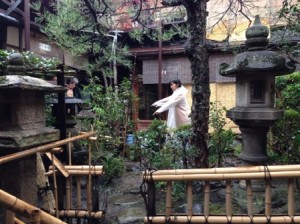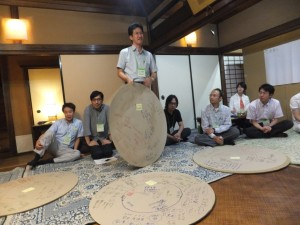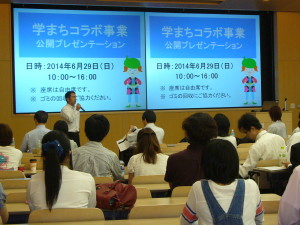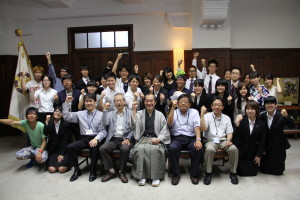In order to utilize the accumulation of “knowledge” of “Kyoto City of Universities” and create policies for the creation of the future of Kyoto, we will hold a report meeting and exchange meeting on the results of the “Future Kyoto Creation Research Project,” which is being conducted in cooperation with university researchers and the department in charge of Kyoto City!
In addition to widely disseminating the results of the six surveys and research projects adopted in the Heisei 26 academic year, the purpose is to promote exchanges between researchers beyond the boundaries of universities and laboratories, and between researchers and citizens, students, government officials, etc.
By seeing the latest research results applied to the community, you will surely have the opportunity to be stimulated by your own research and learning, and to get hints for improving the region. Join us!
Recommended for people like this
・Researchers who want to conduct surveys and research that can make use of their results for the benefit of the community
・Citizens and businesses who are engaged in activities to improve the community
・Students learning about public policy, etc.
・I want to make Kyoto a better place to live! Administrative staff full of enthusiasm
・Those who are interested in the relationship between the university and the community
・ Everyone who loves to learn
Outline of the 26th Achievement Report Meeting and Exchange Meeting
Click here for flyers for the achievement debriefing and exchange meeting.
| Date & Time | Tuesday, March 17, 2015 17:00~21:00 |
| Venue | Campus Plaza Kyoto, 4th Floor, Lecture Room 3 / 2nd Floor, Conference Room 2 and 3rd (Shimogyo-ku, Kyoto-shi, Nishitoin-dori, Shiokoji) [Access] 5 minutes walk from Kyoto Municipal Subway, JR, Kintetsu Kyoto Station |
| Flow of the day | 17:00~20:00 26th Achievement Report Meeting * Each survey or research will be reported by the researcher in PowerPoint or other means. 25 minutes per report (including questions and substitutions) Networking event: 2nd and 3rd Conference Rooms on the 2nd floor 20:00~21:00 Networking event * Participants will be divided into surveys and research themes and will exchange opinions freely. |
| Occupancy | Achievement debriefing session 170 people (no application required, first-come, first-served basis) Exchange Meeting 70 people (registration required) First-come, first-served basis) |
| How to apply | If you would like to participate in the exchange meeting, please apply by e-mail or phone by the following contact information by Thursday, March 12. E-mail address: mirainokyoto■consortium.or.jp (Please change ■ to @ and send) Tel: 075-708-5803 |
| Participation Fee | free |
Timetable for reporting on surveys and research results (1 minute for each preparation, 20 minutes for presentation, 5 minutes for questions and answers)
|
Estimated time |
Principal Investigator |
Survey and Research Themes |
|
|
17:11~17:37 |
Kazuhiko |
designation |
Analysis of trends in employment after graduating from university and research on support measures by local governments, companies, and universities |
|
17:37~18:03 |
Tetsuya |
liberty |
Spatial Composition and Transition in Municipal Housing and Surrounding Residential Areas in the Suburbs of Kyoto City |
|
18:03~18:29 |
Shozo |
continuation |
The Environment of Residential Gardens in Kyoto City and the Impact of Their Reduction on the Biota of City Blocks |
|
18:34~19:00 |
Hideki |
liberty |
Research on next-generation citizen collaboration policies utilizing the “Future Center” in Kyoto City |
|
19:00~19:26 |
Akihiro Saeki(Professor, Faculty of Law, Doshisha University) |
designation subject |
Research on the protection, management, use, and utilization of personal information associated with the introduction of the My Number system |
|
19:26~19:52 |
Masanobu |
designation |
Empirical research on the development of merchants and citizens and the formation of networks by creating opportunities for exchange |
Click here for an overview of each survey and research theme (Research Report vol.2)
Networking events
Based on the results of each survey and research theme, the participants will be divided into categories and will be able to freely exchange opinions with researchers, citizens, businesses, students, government officials, and others.
(Snacks will be prepared.) )
Inquiries and applications
University Consortium Kyoto Think Tank Project
TEL 075-708-5803 FAX 075-353-9101
E-mail mirainokyoto■consortium.or.jp
(Please change ■ to @ and send)
〒600-8216 Shimogyo-ku, Kyoto-shi, Nishitoin-dori, Shiokoji Shimoru Campus Plaza Kyoto
* Reception hours: Tuesday ~ Saturday 9:00 ~ 17:00 (excluding year-end and New Year holidays)














































